
Counting Dead Women: Domestic, Family and Intimate Partner Violence in Australia
Content Warning: This article contains references to femicide, murder, domestic violence, and coercive control.
Since 2012, an online community called Destroy the Joint has run the Counting Dead Women Project. The researchers investigate, count and document the number of women who are murdered each year in Australia. These femicides, many of which relate to domestic violence, are published regularly on their Facebook page. The group is named after sexist comments by radio announcer Alan Jones, who claimed that “women are destroying the joint.” Their story states that “Destroy The Joint stands for gender equality and civil discourse in Australia.”
Impact and The Red Heart Campaign record all Australians who have been the victims of murder or manslaughter. The majority of women who were murdered in Australia in 2020 were killed by family members (52 percent), most commonly their partners or ex-partners (32 percent). This was the same in the case of children, who are much more likely to have been killed by their fathers. Men known to the women constituted 20 percent of perpetrators, and unknown connection males were 14 percent. While more than twice as many men were murdered than women in Australia last year, most were killed by other men not related to them, usually acquaintances or strangers.
In her research paper Intimate Partner Femicide,Jane Monckton Smith outlines an eight-stage progression from pre-relationship to the homicide. Stage One, Pre-Relationship, acknowledges that there is a history of abuse, control and stalking in the previous relationships of the perpetrator. Stage Two, Early Relationship is characterised by gaining commitment by the victim. Many of the attentive, romantic gestures are present, but in fast succession. Stage Three, Relationship, sees a confirmation and commitment to the relationship by the victim coinciding with a belief in the right to control by the perpetrator. This can be seen in restriction of movement and contact, financial control, stalking, and physical and sexual abuse. Stage Four, Trigger/s, is where separation is hinted at or achieved by the victim and the perpetrator believes they have lost control and therefore status. Only the male has the right to end a relationship. Stage four, Escalation, sees an increase in the type and frequency of controlling behaviours in order to re-establish control. Perpetrators may share details of this with other men to get passive solidarity in order to justify their behaviour. Stage six, A Change in Thinking/Decision, sees the perpetrator move from trying to keep the victim in the relationship to destroying her for leaving. The relationship is, only now, irretrievable in their thinking. Stage seven, Planning, has the perpetrator preparing for the killing. Research, purchasing weapons, stalking, planning on disposing of the body, etc. are all examples of preparation. The final Stage, eight, is the Homicide itself. The murder can be excessively violent, even in cases where there was no violence before. Children and others blocking the murder can be included in the killing. Monckton Smith concludes that frameworks of coercive control, feelings of entitlement and male privilege, and justifying behaviour are more accurate predictors of future homicide rather than simply the presence of domestic violence.
The concept of coercive control is explored in the new SBS documentary series See What You Made Me Do. The three-part series, presented by investigative journalist Jess Hill, is based on her book of the same name. In both she has researched the links between power, control and abuse. She is campaigning for coercive control to be criminalised. Coercive control can include things like financial abuse, using technology to track victims, threats of violence to family members and pets, isolating victims from family and friends, and emotional and psychological abuse. Leaving the abusive partner is actually one of the most dangerous actions for victims to take. This is what often heightens abusive behaviour and can result in murder as perpetrators lose their sense of control. Hill also investigates programmes that try to help perpetrators. The participants have similar stories, identifying that their own backgrounds, and being taught not to show or talk about emotions, were key contributors to their attitudes and behaviour towards women.
Sadly, the Church does not escape domestic violence or coercive control. The Anglican Church released its first National Anglican Family Violence Research Report in April 2021. The report documents that abuse is actually higher in the Anglican church than in the general population. When asked the direct question ‘Have you ever been in a violent relationship with any partner?’, 22 percent of Anglicans who had ever been in an adult intimate relationship responded ‘yes’. This compares to 15 percent for the equivalent group of the general Australian public. In the general population, the prevalence of Intimate Partner Violence (IPV) overall across their adult lifetime was 38 percent of those who had ever been in an adult intimate relationship. Among those who identified as Anglican it was 44percent. Statistics of being in a violent relationship, experiencing specific acts of IPV and spiritual abuse were consistently higher amongst those who attended Anglican churches regularly to those who attended infrequently. Anglican women were more likely to experience IPV than men, yet Anglican men were less likely to experience sexual violence than men in the general Australian population. Of great concern was the fact that 88 percent of victims of domestic violence did not seek help from their Church, demonstrating a lack of trust that they would be believed or supported in their situation.
ABC investigative journalists Julia Baird and Hayley Gleeson have been researching domestic violence in religions since 2017. Their first piece was on Islam and how some believe that the Koran allows the beating of women. They have since investigated specific issues in Judaism, the Catholic Church, the Protestant Church, Sikh and Hindu communities and for Christian clergy wives. Their in-depth reporting of domestic violence in the Christian church, demonstrates a clear link between domestic violence and male headship theology. Scripture is often used by male perpetrators to force submission from their wives and obedience from their children, and by clergy to encourage victims to forgive and stay in abusive relationships.
Hannah Wagner, in her article, Femicide is a Christian Issue, concludes:
‘Christianity’s history is rooted in patriarchy. Because of this, the fundamental belief that women are inferior is embedded in much of the Christian culture, especially related to how men and women interact. Dismantling the remaining remnants of misogyny in our theology should be at the forefront of Christian discussion.’
The first mention of men and women in the Uniting Church’s Basis of Union is under the section Gifts and Ministries. It states:
The Uniting Church affirms that every member of the Church is engaged to confess the faith of Christ crucified and to be his faithful servant. It acknowledges with thanksgiving that the one Spirit has endowed the members of Christ’s Church with a diversity of gifts, and that there is no gift without its corresponding service: all ministries have a part in the ministry of Christ… The Uniting Church will thereafter provide for the exercise by men and women of the gifts God bestows upon them, and will order its life in response to God’s call to enter more fully into mission.
At no point is there any distinction between men and women. Whether in ministry, lay service or church governance roles, women and men are treated as being equal and capable of service. If this is so within the church, it extends to the family unit. All members of a family are equal and deserve respect and protection. Paul’s letter to the Galatians explains that nothing of human consequence determines their participation in God’s saving work.
‘So in Christ Jesus you are all children of God through faith, for all of you who were baptized into Christ have clothed yourselves with Christ. There is neither Jew nor Gentile, neither slave nor free, nor is there male and female, for you are all one in Christ Jesus. If you belong to Christ, then you are Abraham’s seed, and heirs according to the promise.‘ (Galatians 3:26-29, NRSV)
If both men and women share equally in God’s provision, forgiveness and grace, how can humans not demonstrate the same to all? Scripture speaks of humans being made in the Image of God, the Imago Dei (Genesis 1:27). As such, human beings are endowed with immense value. They are precious and are to be treated with dignity, love, compassion and care. Intimate partner violence and femicide are extreme examples of the dehumanising of another person and of distorted concepts of male superiority.
Domestic violence, coercive control and femicide reveal a terrible emotional, social and human cost as children, families and communities are affected. Sexism, misogyny and violence against women are issues that must be addressed by the church, by society as a whole but also by men willing to listen and stand with women.
The Uniting Church has published a resource for those in ministry called the Domestic Violence Handbook for Clergy and Pastoral Workers. It contains information about, and identifying features of, domestic violence, commonly held myths, theological reflection and resources for those experiencing domestic violence.
Dr Katherine Grocott
If this article brings up issues for you, help is available. The following support services can help.
- 1800 RESPECT national helpline: 1800 737 732
- Men’s Referral Service: 1300 766 491
- Lifeline (24-hour crisis line): 131 114
- Relationships Australia: 1300 364 277
- Categories: Belief Matters, COVID-19, Features








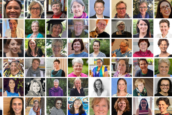




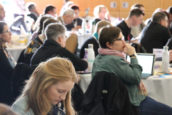




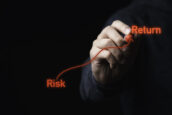



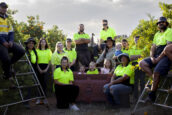
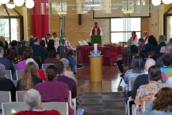





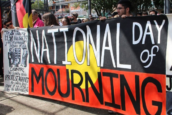









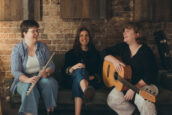





















1 thought on “Counting Dead Women: Domestic, Family and Intimate Partner Violence in Australia”
How many women are killed due to domestic violence in Australia each year. You have given lots of percentages, but no actual numbers.